Briefly Berlin
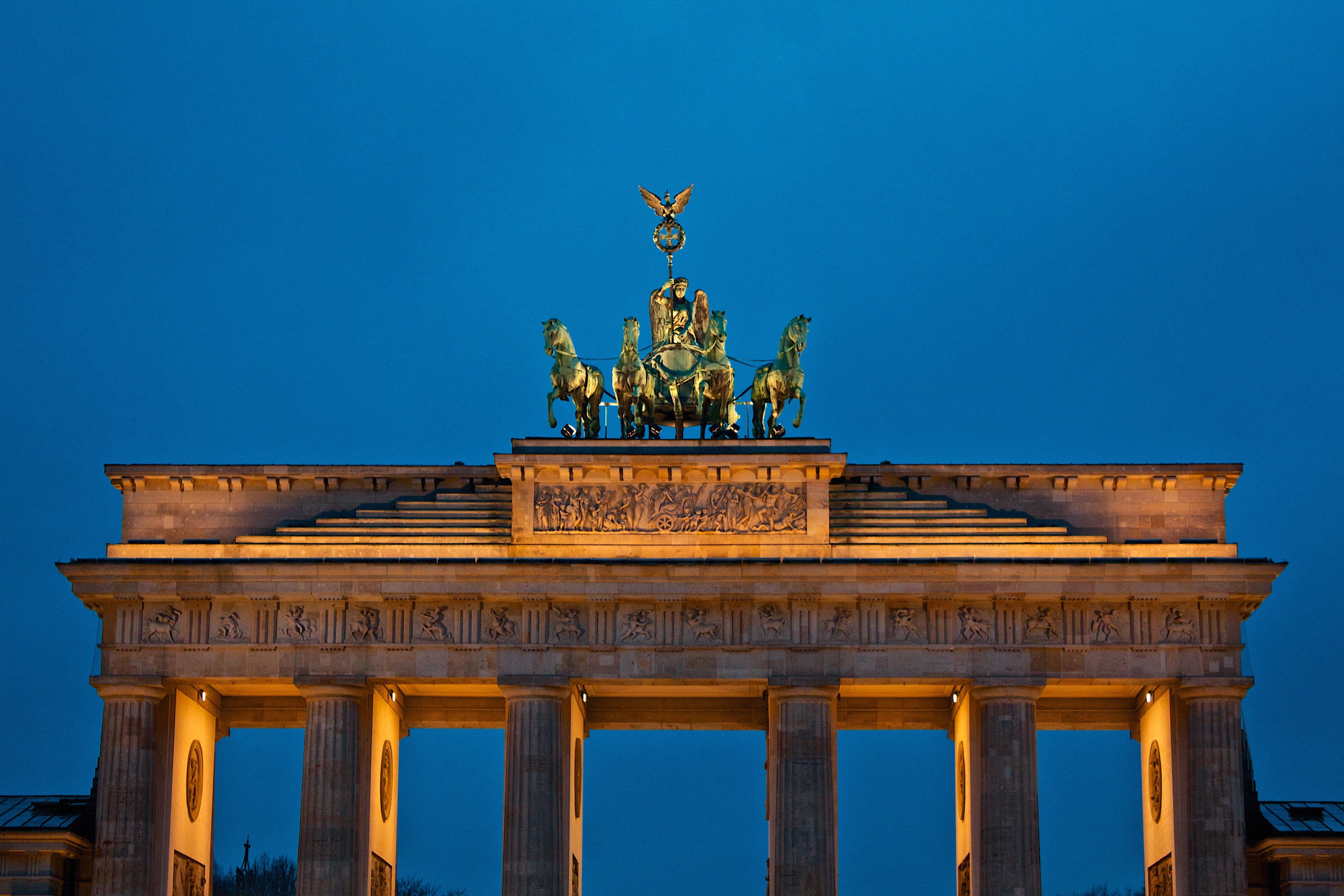
The Brandeburg Gate
Before going freelance, I decided to take some time off during February to visit my family in Brazil. Turns out, spending nearly three weeks with a large family crammed into a small flat, with two young – often screaming – children in searing hot weather is far from relaxing. By the end of my stay I was ill, wrung out and unsure if I wanted to spend a further three days in Berlin before returning home as originally planned.
Having landed at Schönefeld, acclimatised to the colder climate and checked in to my hotel, I spent the evening walking around the Mitte district, via Tiergarten and the Brandenburg Gate. I was immediately struck by the peacefulness – appreciated after enduring the sound of a São Paulo suburb preparing for Carnival – and felt safe as I wandered round pointing my camera at points of interest. Germany couldn’t be any more different from Brazil, and Berlin proved to be the perfect way to unwind after the commotion of the previous week.
First sight
I always imagined the Brandenburg Gate as freestanding, separate from other buildings (as it was during the time of the Berlin Wall). Instead I found it surrounded on one side by a selection of bland and featureless offices that only serve to dilute the grandeur of the former toll booth through which Napoleon marched. I then headed towards Checkpoint Charlie, fully aware of its slightly commercial appearance. Had I not read about this before, I may have been more astounded by the faux military personnel and illuminated signage.
Much of my first evening was spent trying to figure out how the metro system (S-Bahn and U-Bahn) worked. Routes are plentiful but share similar colours, and require knowing their final destination to ensure you board the right train. I was reminded of the adrenaline rush experienced by travelling in unfamiliar lands; a couple offering me their unused tickets served only to briefly confuse matters.
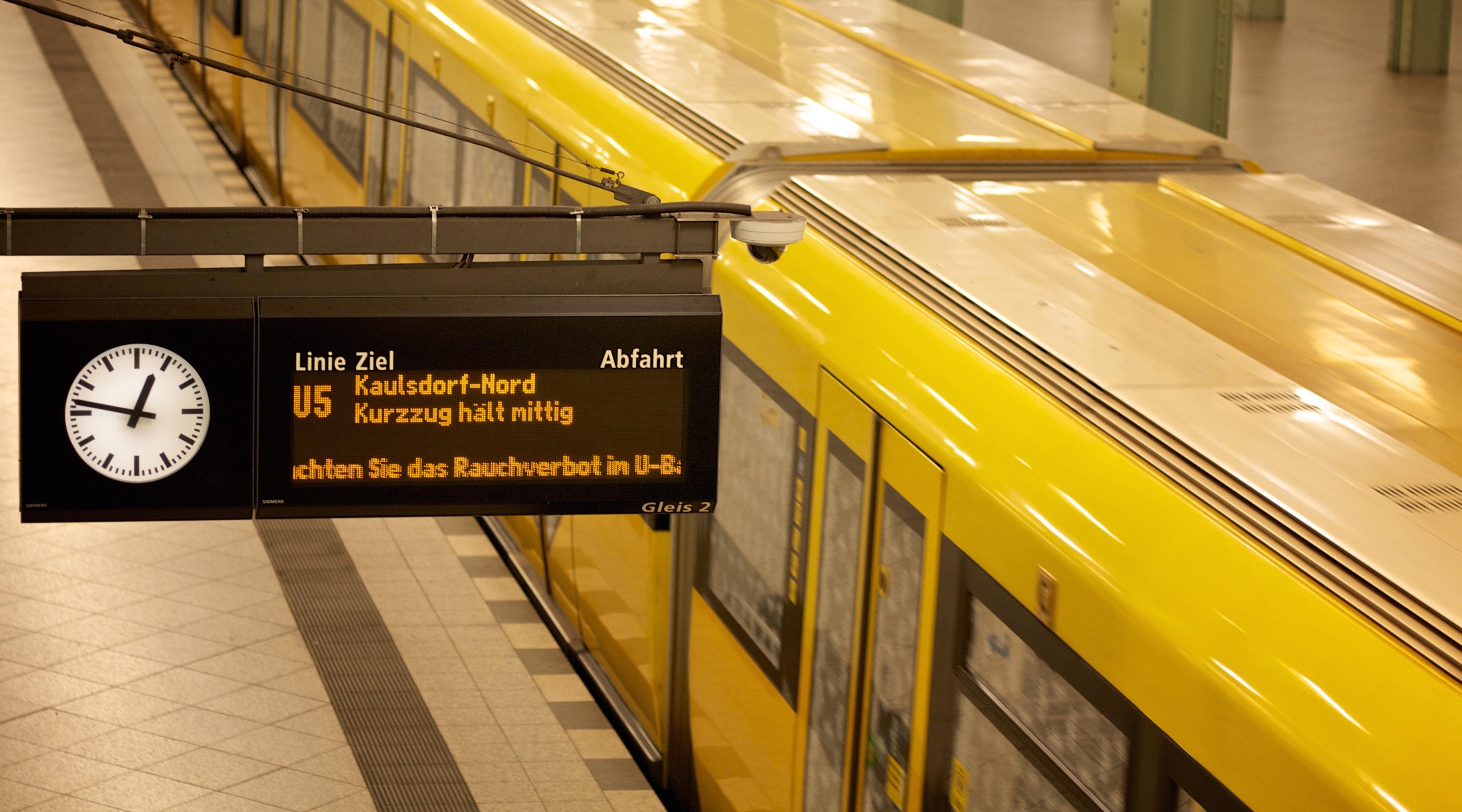
A U-Bahn train arrives at Alexanderplatz station
The absence of entrance/exit barriers means the system relies heavily on trusting passengers, although needing to validate a ticket before travel seems designed to confuse tourists. Thankfully I worked this out before meeting one of the casually dressed yet intimidating ticket inspectors.
Other cities make much of their waterways, but the River Spree that runs though Berlin is easily missed. One area in which the river is made a feature is around Museumsinsel, a small island upon which a number of art galleries and museums sit. Upon my return home I discovered that I had in fact walked very close to the site of the former communist Palast der Republik, a building I would loved to have seen before it was demolished.
Olympiastadion
A common aspect of my travels is visiting former Olympic stadiums, and this trip was no different. Germany has an unfortunate history relating to the Olympics; I had previously visited the site of the 1972 massacre in Munich, and here I was visiting the centrepiece of Hitler’s orchestrated event of 1936. Tourism can sometimes feel like a very crass activity.
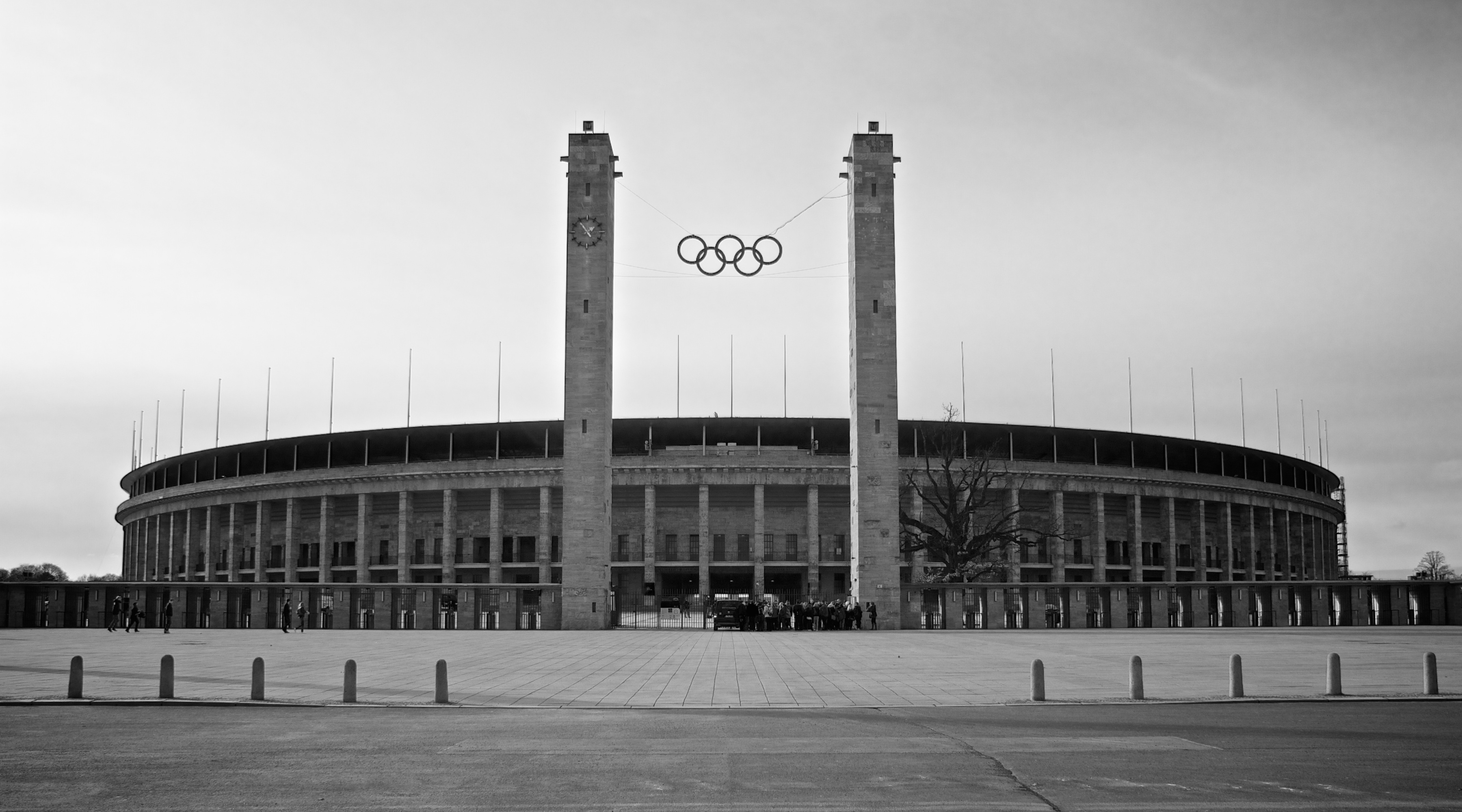
The imposing gates to Berlin’s Olympic Stadium
This amphitheatre modelled on the Roman Colosseum, was designed as a platform for Nazi propaganda, a means of drawing a line between Aryan superiority and Greek antiquity. The six columns surrounding the stadium represented the nationalistic ideology of the time in which Germans came from one of six clans: Bavarians, Prussians, Saxons, Frisians, Swabians and Franconians. On the east side of the stadium part of the arena is cut away. This is the Marathon Gate where the olympic cauldron is situated. This also provides a view towards the Maifeld parade ground and a bell tower which sits upon the Langemarckhalle, a memorial to young German soldiers who lost their lives during the First World War.
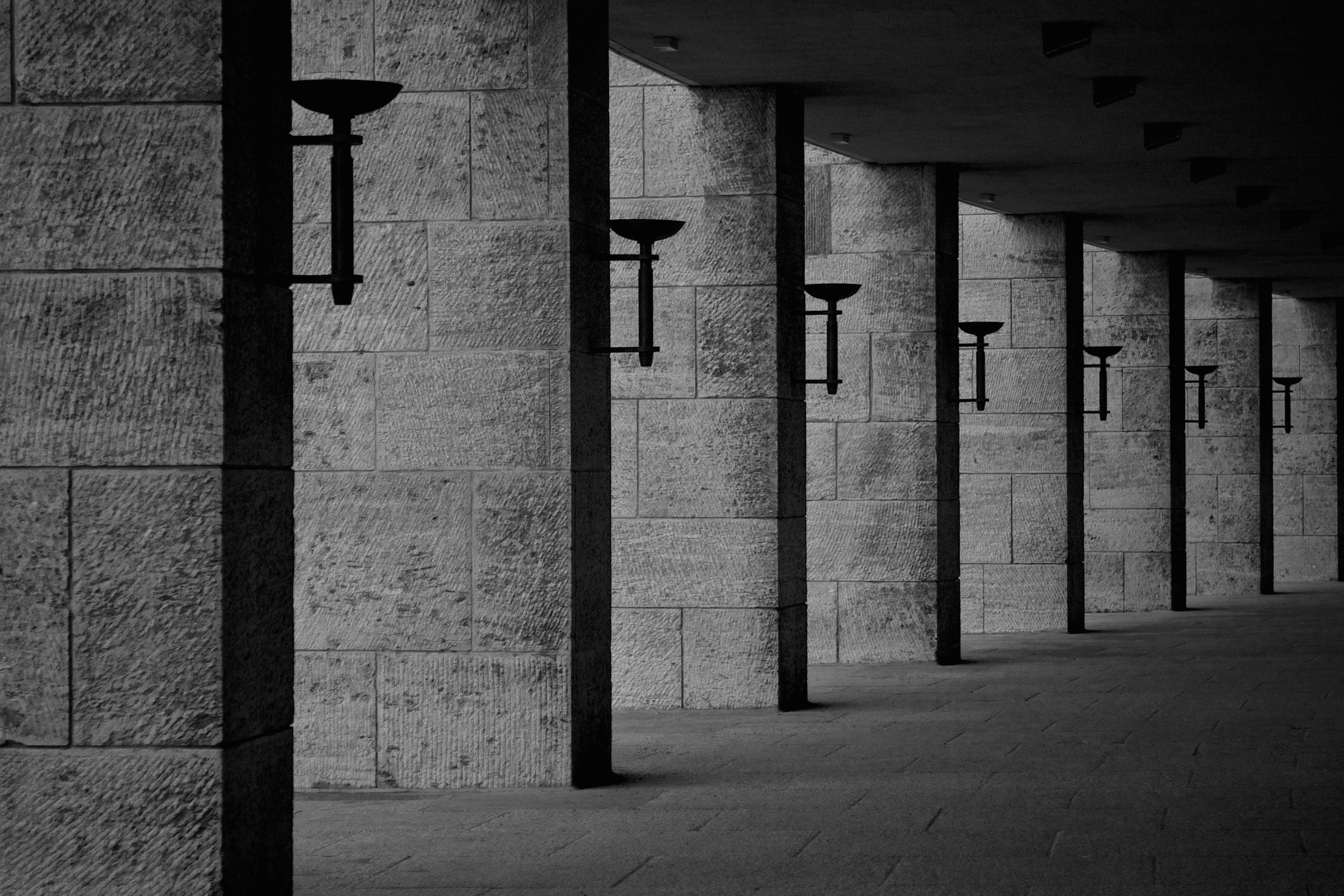
Much of the stadium appears as it did during the 1936 Olympic Games
Phoney symbolism aside, the design of the seating bowl is actually quite smart, and much of this straight forward design remains untouched after the considerable refurbishment that took place prior to the 2006 World Cup. The outdoor swimming pool sat next to the stadium looks unloved in comparison, with both pools filled with rainwater.
Berlin Wall
The Olympiastadion is just one aspect of Berlin’s dark past. Many parts of the Berlin Wall remain, and opposite the documentation and memorial centre, one section has been restored to its original state. A further length of wall includes audio/visual presentations that describe the events that took place and show what the surrounding area previously looked like. Markings on the ground outline the location of buildings demolished to make way for the wall, while round metal plates indicate the points at which those attempting to cross the border were killed.
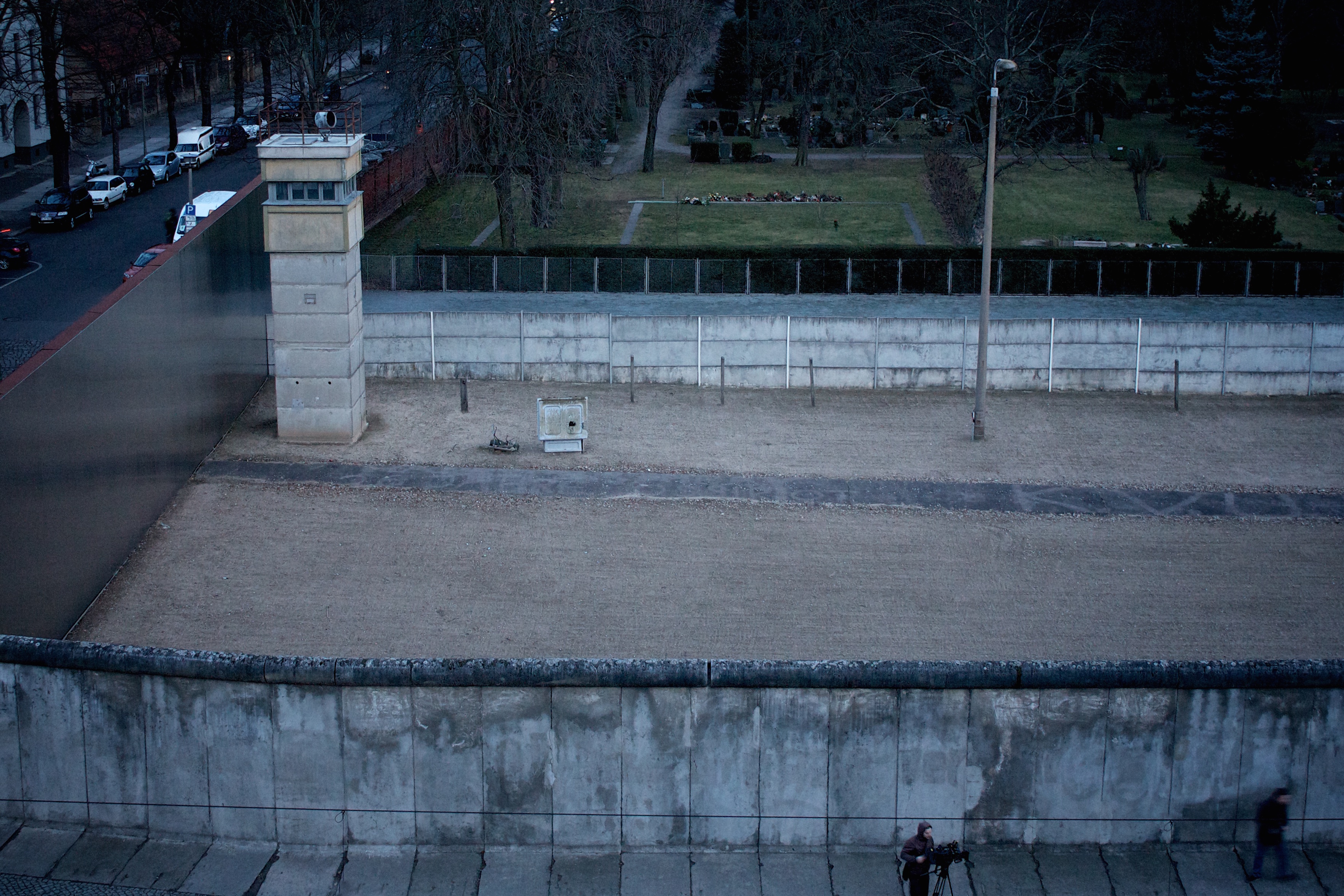
A short section of restored Berlin Wall, complete with watch tower
Such shocking transparency brought home the dreadful and tragic situation Europe found itself during the last century. Hopefully having such a visible scar etched across Berlin will stop us from making the same mistakes again.
Return visit
Two full days wasn’t enough time to fully explore what this city has to offer. The Reichstag building and Templehof Airport remain on my list, as do many of the museums and galleries. I took a real affection to this city, and in a strange way already miss being there. I’m sure it won’t be too long before I return.